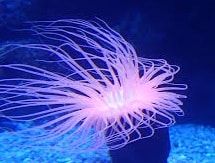Before entering fully into the meaning of the term optical fiber, we are going to proceed to know the etymological origin of the two words that give it shape:
-Fiber, first of all, derives from Latin, exactly from "fibra", which means "fiber".
-Optics, secondly, comes from Greek. Specifically, it emanates from "optikos", which is the result of the sum of two lexical components of that language: the noun "ops", which can be translated as "view", and the suffix "-tikos", which is used to indicate "relating to."
Fibers are threads that make up a fabric or that can be used in various ways at an industrial level. Optics or optical , for their part, are terms that can refer to the study of phenomena linked to light (the electromagnetic wave that the human eye can perceive).
 With these definitions, we can focus on the concept of fiber optics . This is the name given to the transparent filament , usually made of glass, that is used for the transmission of data through light pulses .
With these definitions, we can focus on the concept of fiber optics . This is the name given to the transparent filament , usually made of glass, that is used for the transmission of data through light pulses .
Fiber optics, therefore, is a medium for transmitting information that is used to develop telecommunications networks. The light signals that, enclosed in the fiber, circulate through these networks , allow the information to be represented.
The transmission speed offered by fiber optics is very high. That is why it is a chosen medium for sending data over long distances, since it also has several advantages over other systems.
Bandwidth , low weight and flexibility are some of the strong points of optical fiber, which does not produce or suffer electromagnetic interference.
In the same way, we cannot ignore another important series of advantages of fiber optics, such as the following:
-Takes up very little space.
-It's really very safe.
-It is identified by offering great resistance to both heat and corrosion and even cold.
-When it suffers a breakdown, it is very easy to detect where the problem is thanks to what is known as reflectometry.
Negative aspects include the fragility of the filaments and the cost of the signal transmitters and receivers.
Regarding its disadvantages, we cannot forget some like these:
-Sometimes, the splices that need to be made are complex and require time.
-Under no circumstances can it transmit what is electrical energy.
-What is defined as conventional type cannot carry out the transmission of what are great powers.
In practice, fiber optic cables are used that bring together several of these transparent filaments and protect them. Signals are therefore transmitted through these cables which, equipped with connectors, can be connected to Ethernet switches and other devices.
There are different types of optical fiber taking into account criteria such as its design or propagation mode. Thus we can talk about multimode, singlemode, tight structure, loose structure...
